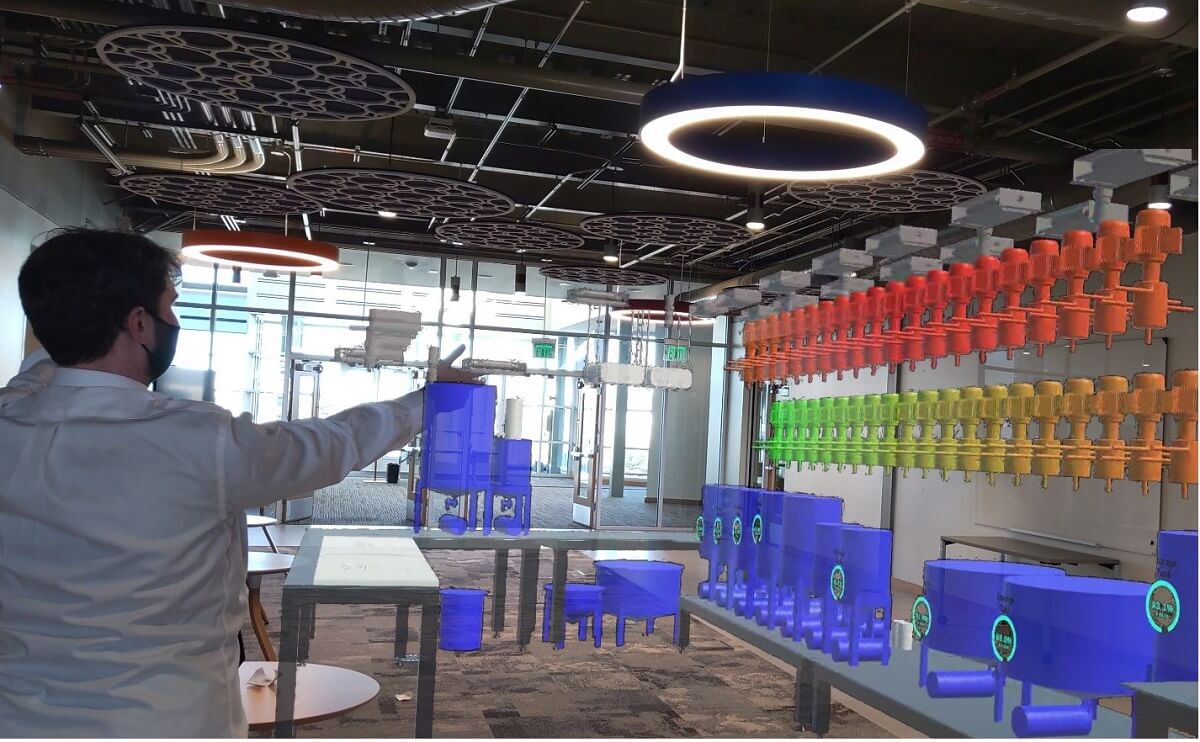Digital Engineering of a Nuclear Fuel Processing Testbed
Building Information Model (BIM) and Extended Reality (XR) technology combined with digital twins enable unique capabilities in the era of remote work
Figure 1 – Beartooth nuclear fuel cycle testbed
DIGITAL ENGINEERING OF A NUCLEAR FUEL PROCESSING TESTBED
Beartooth is a nuclear fuel cycle testbed with the complex mission of providing essential capabilities around understanding new fuels while also demonstrating the power of digital engineering. This problem along with the new challenge of remote work during the COVID-19 pandemic required this multi-disciplinary team to embrace a new way of collaborating. The Digital Engineering team introduced Models-based Systems Engineering (MBSE) early in the design. Complex systems often develop issues when various teams responsible for its design and construction have their data siloed off from one another. Our approach allowed for shared understanding of this complex system, its stakeholders, and its functions by consolidating data in a centralized digital system. Errors in documentation in the design were caught early with our collaborative systems engineering approach that saved cost early in this project.
Understanding of a design can’t be done entirely with documents and databases. Fabrication of a system where human interaction is critical, such as our integrated series of gloveboxes, requires understanding the physical/operator interfaces. Building Information Model (BIM) and Extended Reality (XR) technology combined with digital twins enabled unique capabilities in the era of remote work. Integration of BIM and Mixed Reality (MR) offered the ability to see and understand a system in physical space with a digital representation. Early in the design of the system, full scale digital representations provided understanding of these physical/operator interfaces and ensured that the system provided ample space for users to work. Validating this critical part of the design early ensured there would be no need to change design or refabricate parts of the system, keeping the project within budget.
Digital Engineering’s value to the project will extend far beyond the design phase. Integration of sensors throughout the system will provide novel information surrounding nuclear processes around these new fuels. The collection of the standard instrumentation and control (I&C) sensors with these new sensors will be collected into a digital thread that will feed into a digital twin. This digital twin will allow users to view and understand the system in ways previously impossible by providing real-time artificial intelligence (AI) and machine learning (ML). These unique insights will be provided to users of the testbed through the cloud to their desktops, smartphones, and XR devices. Operators and maintainers of the system will be able to use MR devices to truly ‘see’ the data of the system without being constrained to a desk.
